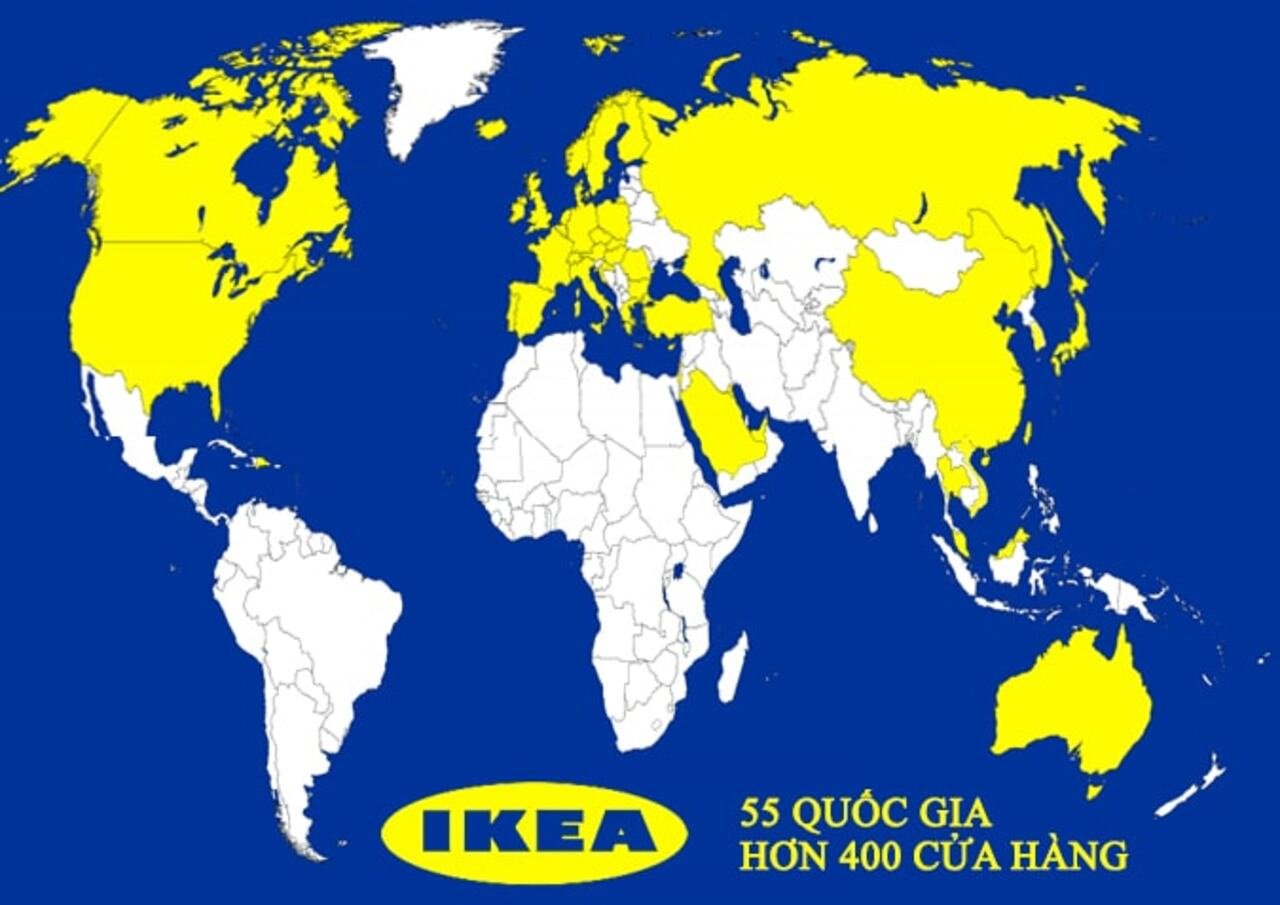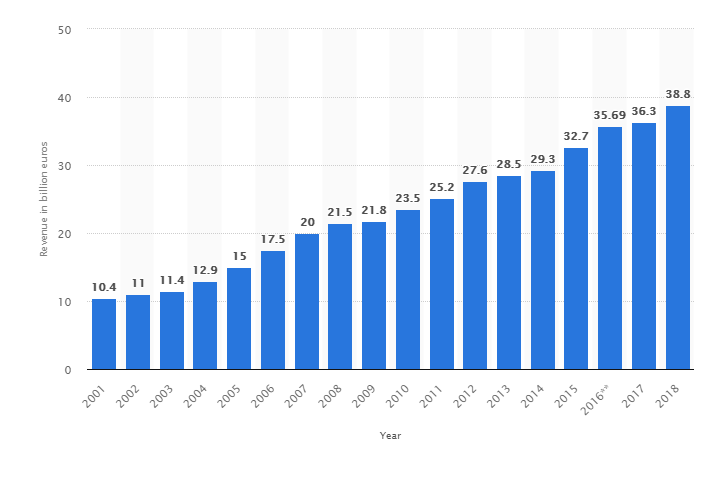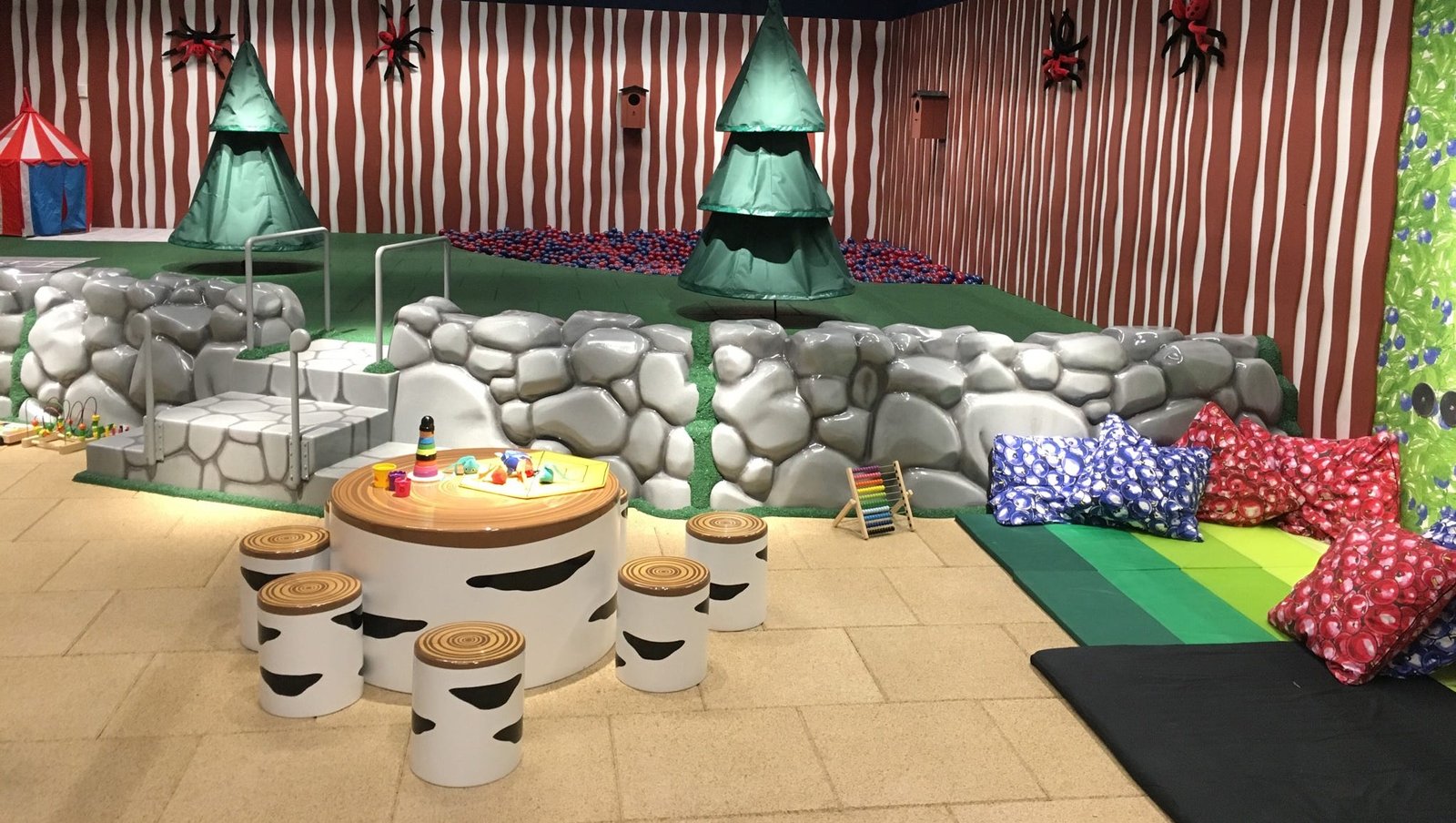IKEA is an international company specializing in the design of semi-assembled furniture, home appliances and accessories. Born in 1943 in Sweden with his father, Ingvar Kamprad – a 17-year-old entrepreneur, IKEA has quickly dominated more than 400 global stores in more than 50 countries, scattered across all continents.

IKEA’s products are designed to be simple, consistent with the spirit of the world’s largest furniture company: Design for everyone. IKEA has both high-end products but still has the main focus on designs that can reach all consumers, so that when you walk into an IKEA store, whether you are a middle-income person or a wealthy person to choose something suitable for your family. According to information from IKEA’s sales website, this brand has up to 12,000 product lines for customers to choose from, you can even buy an entire house with IKEA.

With the main customer group being young people, IKEA has really mastered the furniture market around the world. For many years, IKEA has always been named in the top 50 most valuable global brands by Forbes magazine. With a strategy that has remained almost unchanged for many years: products are simple but have a refined and elegant style; functions are always improved to suit life; with low cost and convenience, IKEA has tomanuallyffirmed its No. 1 position in the world furniture village.
To achieve such great success, IKEA’s supply chain will surely have outstanding features that help IKEA maximize profits while ensuring customer requirements are satisfied.
Overview of the IKEA supply chain operation
- The company determines the production requirements of each item and determines the activities that need to be carried out to make the product, while also determining the costs involved.
- IKEA representatives will place orders with suppliers for the raw materials needed to manufacture the items.
- Once the raw materials are available, the company arranges and allocates resources for production and starts the production process, and must comply with the company’s quality requirements.
- The manufactured products are then moved to storage facilities and distributed to stores, and ultimately to customers.
- If the customer is not satisfied with the quality, they can return the product under the warranty period upon purchase.
Special points in IKEA’s supply chain
- Save on production and shipping costs
IKEA’s production and shipping costs are relatively low because IKEA’s furniture and accessories are largely made of recycled and sustainable materials. According to a Times London study, more than 50% of IKEA products are made from environmentally sustainable or recyclable items. IKEA seeks ways to use as few materials as possible to create products without violating its commitments to quality and durability. This also helps businesses cut transportation costs by using less fuel and labor in the delivery of raw materials and products.
- Customers self-assemble, self-finish products
A special feature of IKEA products is that the products are always designed so that customers can disassemble and assemble them by themselves. Furniture is sold in pieces, packaged in flat, convenient packages. As a result, IKEA saves on shipping and fulfillment costs because products take up less room in the truck, so IKEA can ship more items at a lower cost. The DIY principle also allows the company to use storage space more efficiently, and this also helps IKEA save money on inventory management. Finally, it is also through the application of the DIY principle that many IKEA products are shipped directly from the supplier to the store, a strategy that helps IKEA significantly reduce costs by not having to store products in facilities storage or distribution center.

- IKEA always keeps a long and sustainable relationship with its suppliers
In the late 1990s, IKEA had more than 2,000 suppliers, but by 2009 the number of IKEA suppliers had decreased to 1400, and by 2014, IKEA maintained 1005 suppliers. The cause of the decreasing trend in the number of suppliers in recent years is the increasingly stricter selection of suppliers through a series of strict standards in terms of price, quality and supplier’s environmental performance according to the sustainability strategy that IKEA is implementing. The decrease in the number of suppliers does not mean a decrease in the supply volume and diversity of IKEA’s product supply. This is clearly shown through the positive business results data in major markets around the world, IKEA still holds the leading position.

The company has been using 42 commercial service offices around the world to manage relationships with suppliers. IKEA will sign long-term contracts with the most trusted suppliers to receive materials at the lowest possible price. In addition, IKEA encourages its wholesale partners to be environmentally conscious by creating a set of rules “The IKEA Way for Procurement of Goods, Materials and Services” (The IKEA Way on Purchasing Products, Materials and Services), or IWAY for short, for its suppliers. This is what makes IKEA’s tables and chairs always affordable for customers and in line with the “green” supply chain trend.

- Managing IKEA’s logistics activities at the store
Unlike other stores, IKEA hires logistics managers to work in-store. These bearers will be responsible for all inventory-related processes, such as overseeing deliveries, sorting and separating goods, and dispatching them to the locations required by the customer. In addition, each IKEA store has a showroom upstairs and a warehouse on the ground floor with more than 9,500 products in stock. At the showroom, customers can see and feel the products. Each item has its own serial number as well as its own aisle number. Customers can use these numbers to locate items in stock. However, shoppers cannot access a third of the warehouse space because this area is dedicated to bulky items that cannot be collected without staff assistance.

- Effectively apply a cost-per-touch (Cost-per-touch) strategy
Cost per touch means that the more times someone touches the product during shipping, the more costs the company has to bear, as the company needs to pay the staff for the collection and delivery. IKEA uses a cost-per-touch strategy to encourage customers to pick up products in the store and check them out for themselves, rather than having employees in the warehouse. By applying this strategy, customers will choose the right products for their needs and reduce the return rate, thereby helping IKEA reduce the cost of the product recall.
- Dedicated warehouse areas for high- and low-traffic goods
IKEA warehouses are divided into automated facilities for high-traffic goods and manual facilities for low-traffic goods.

High-traffic merchandise with 20% SKUS accounts for 80% of IKEA warehouse inventory volume. These products sell quickly, are easily accessible for self-service, and use inventory tracking. If the products at IKEA are easy for customers to find and get, they belong to high-traffic merchandise. Automated storage and retrieval systems in warehouses for high-traffic goods to reduce costs-per-touch.
In contrast, low-traffic goods are those that sell more slowly. This is a product that has a lot to do with cost-per-touch. If employees move these items, it will increase IKEA warehouse costs. Manual processing will be applied to low-traffic items due to low demand.
Specifically, the IKEA U.S. facility is distributed as follows: The Perryville facility currently handles low-traffic merchandise products for the entire eastern half of the United States. Meanwhile, regional DCs, such as Port Wentworth, can process high-traffic merchandise products quickly for these DC pick-up stores, reducing transit times and total distance needed go to support the store.
- Flexible inventory replenishment system
IKEA uses a Min/Max Inventory Replenishment system. In-store logistics managers can view their store level through the inventory system. This system uses information about re-order points at each store (since stores may vary in sales models) to maintain inventory levels. For IKEA, these levels are usually set according to the inventory needed for a day in stock.
The system will help the company determine the perfect reorder point and prevent the problem of overstocking. Accordingly, managers will know what is sold and how much inventory is brought into the store through direct shipping or from distribution centers. They then use this information to forecast sales for the next few days and order products to meet forecast demand. If the sales data does not match the expected number of items that should be sold that day, the logistics manager will manualy process the inventory.
- Customer-centric approach
Regular monitoring of customer satisfaction is an integral part of IKEA’s business strategy. They will thoroughly analyze the number of customer complaints, product returns, demand for certain products and customer suggestions. Company representatives even visit their customers’ homes to gather feedback and ideas on products that customers may be looking for. The ideas gathered are then used as the starting point of a new design process. Finally, the IKEA stores offer visitors extras, such as a children’s play area as well as a food court and small shop with traditional dishes of that area. This encourages customers to visit stores in person even in the age of e-commerce and online shopping.

Phan Quyen
Decathlon’s Supply Chain (Part 2: Operations, Logistics and Distribution)













